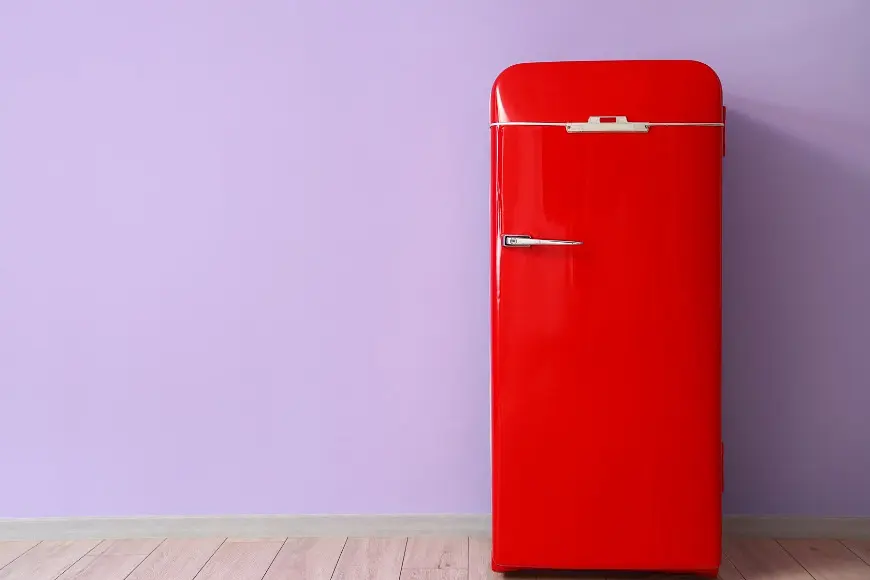Home Décor
Moving
Lease
Tenants
Renovation
7 Fridge Myths Debunked for Summer
4 minutes
Listen to the blog audio:
The blog post has been auto-translated.
Show original
-3.jpeg?locale=en)
Myth 1|"Is a full fridge more energy efficient?"
- ❌ Too full → It hinders air circulation, the compressor has to run longer, making it noisier and consuming more electricity
- ✅ 70–80% full is ideal: enough food to maintain low temperatures, while leaving gaps for air convection
- ✅ Regularly "organize the fridge": check for expired/duplicate ingredients weekly to maintain space and reduce waste
Myth 2 | "No problem putting hot food directly into the fridge?"
- ❌ Putting hot food directly into the fridge can cause the internal temperature to rise sharply, easily promoting bacterial growth and making the fridge consume more electricity.
- ✅ Let it cool to room temperature first (should be done within about 30 minutes), then store it in sealed containers in the fridge; soup can be divided into small bowls to cool slightly.
- ✅ If you are worried about the food going bad, you can place the food container in a basin of ice water to quickly lower the temperature before putting it in the fridge.
Myth 3|"Raw and cooked foods can be placed anywhere, as long as it's cold enough"
- ❌ Juice from raw meat dripping onto cooked food → High risk of cross-contamination
- ✅ Layering + Sealing:
- Top layer: Ready-to-eat/Cooked foods (cake, dairy products)
- Middle layer: Opened beverages, leftovers in sealed containers
- Bottom tray: Raw meat, fish, placed in a tray
- Drawer: Vegetables and fruits, to maintain humidity
- ✅ Store sauces and beverages by the door → The door has the highest temperature, not suitable for milk and eggs
Myth 4|"Frost in the fridge means it's cold enough, so no need to worry"
- ❌ Thick frost=Poor insulation → Decreased cooling efficiency + Increased electricity bill
- ✅ For frost-prone fridges (non No Frost), if ice layer>5 mm, you should
- Unplug and take out the food
- Leave the door open for defrosting, a fan can be used to speed up the process
- Wipe dry and plug back in
- ✅ No Frost fridges auto-defrost, but the condenser coils and rear heat dissipation net should be vacuumed every 6 months to maintain efficiency
Myth 5|"Fridge odor will naturally disappear"
- ❌ Only masking the smell without removing the source, bacteria still breed
- ✅ Correct three steps:
- Find the culprit: Check and discard spoiled/leaking food
- Natural cleaning: 1 part white vinegar + 5 parts water spray all over the cabinet; use baking soda paste for stubborn stains
- Long-lasting deodorization: Place open baking soda box, activated charcoal bag or coffee grounds, replace monthly
Myth 6|"The lower the temperature knob, the better, the colder the longer the preservation"
- ❌ Around the freezing point, vegetables and fruits are prone to frostbite; the compressor running for a long time can damage the machine
- ✅ Refrigeration at 0–4 °C and freezing at –18 °C are sufficient to inhibit bacteria. You can add a refrigerator thermometer to calibrate the scale
- ✅ In summer, you can slightly lower the setting by 1 notch when there's more food; in winter or when the fridge is half empty, raise the setting by 1 notch to save electricity
Myth 7|"Does vinegar/baking soda cleaning corrode the inner pot?"
- ❌ Low concentration white vinegar (1:5) and baking soda are mild cleaners and will not harm the plastic shelves
- ✅ After use, wipe clean with a damp cloth and keep dry
- ✅ Avoid using steel wool or high concentration bleach sprays as they can easily scratch or leave a chemical smell
If you are looking for a place to live in Hong Kong, why not try our LetsGetHome Golden Key House rental platform!
Rent a place|Study in Hong Kong https://www.letsgethome.com/zh-HK/blog
Free self-listing https://www.letsgethome.com/zh-HK/listings/new
Home Décor
Moving
Lease
Tenants
Renovation
